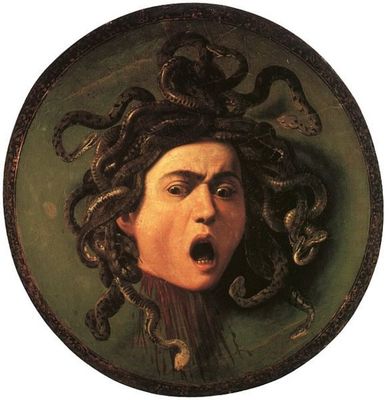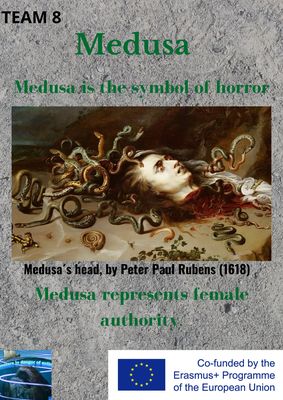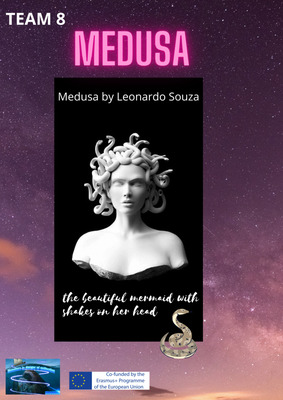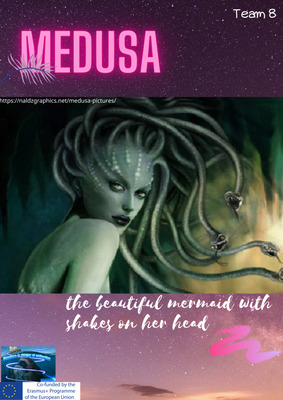
Medusa by Caravaggio, 1595.
According to late classical poets, Medousa was once a beautiful woman who was transformed into a monster by Athena as punishment for lying with Poseidon in her shrine. Earlier Greek writers and artists, however, simply portray her as a monster born into a large family of monsters.
The three Gorgones were depicted in ancient Greek vase painting and sculpture as winged women with broad, round heads, serpentine locks of hair, large staring eyes, wide mouths, lolling tongues, the tusks of swine, flared nostrils, and sometimes short, coarse beards. Medousa was humanised in late classical art with the face of a beautiful woman. In mosaic art her round face was wreathed with coiling snakes and adorned with a pair of small wings on the brow. Theoi Greek Mythology.

In this activity, after discusings about the simbolysm of the Medusa, you are going to collaborativelly create a poster with canva for the Female Monster Museum from artworks.
The poster shall include:
-The name of the monster.
-The title of the artwork or artworks that appear on the poster.
-The name of the authors of the artworks that appear on the poster.
-Some written and oral annotations in English explaining the symbolism of the female monster.
-The number of the transnational group: 8.
-The logo of the project and the European Union.
-To create the poster in a collaborative way, we are going to use the tool: canva.
-In each poster you could create more tha one page.
-To enter canva you have just to copy the link corresponding to your international group.

Poster - team 8


